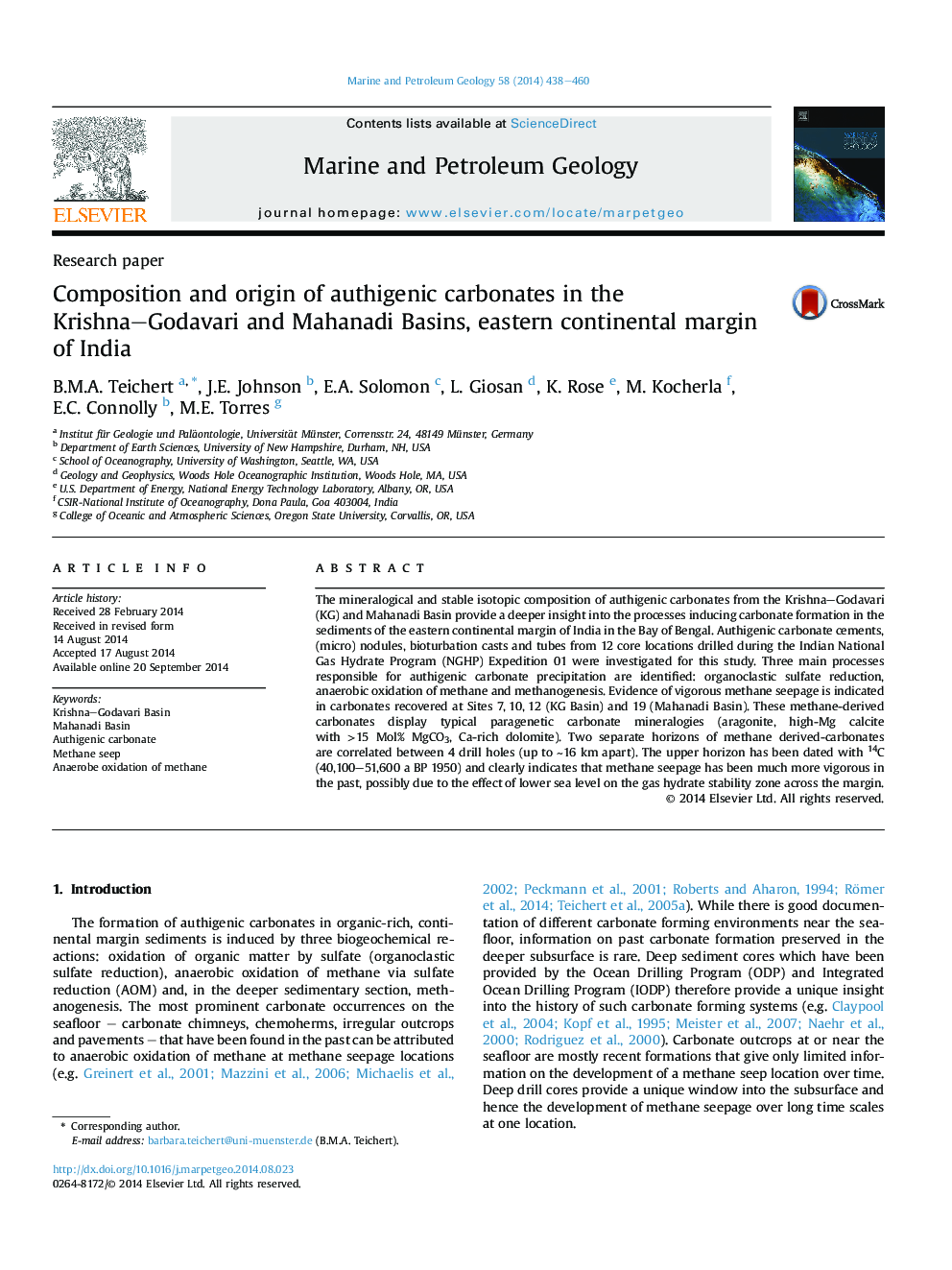| Article ID | Journal | Published Year | Pages | File Type |
|---|---|---|---|---|
| 6435247 | Marine and Petroleum Geology | 2014 | 23 Pages |
â¢Methane-derived carbonates are found at several locations in the Krishna-Godavari Basin.â¢High-Mg calcite and Ca-rich dolomite are indicative for seep carbonates.â¢Methane seepage in the Krishna-Godavari Basin was more intense in the past.â¢Carbonates trace widespread, synchronous methane seepage.
The mineralogical and stable isotopic composition of authigenic carbonates from the Krishna-Godavari (KG) and Mahanadi Basin provide a deeper insight into the processes inducing carbonate formation in the sediments of the eastern continental margin of India in the Bay of Bengal. Authigenic carbonate cements, (micro) nodules, bioturbation casts and tubes from 12 core locations drilled during the Indian National Gas Hydrate Program (NGHP) Expedition 01 were investigated for this study. Three main processes responsible for authigenic carbonate precipitation are identified: organoclastic sulfate reduction, anaerobic oxidation of methane and methanogenesis. Evidence of vigorous methane seepage is indicated in carbonates recovered at Sites 7, 10, 12 (KG Basin) and 19 (Mahanadi Basin). These methane-derived carbonates display typical paragenetic carbonate mineralogies (aragonite, high-Mg calcite with >15 Mol% MgCO3, Ca-rich dolomite). Two separate horizons of methane derived-carbonates are correlated between 4 drill holes (up to â¼16 km apart). The upper horizon has been dated with 14C (40,100-51,600 a BP 1950) and clearly indicates that methane seepage has been much more vigorous in the past, possibly due to the effect of lower sea level on the gas hydrate stability zone across the margin.
